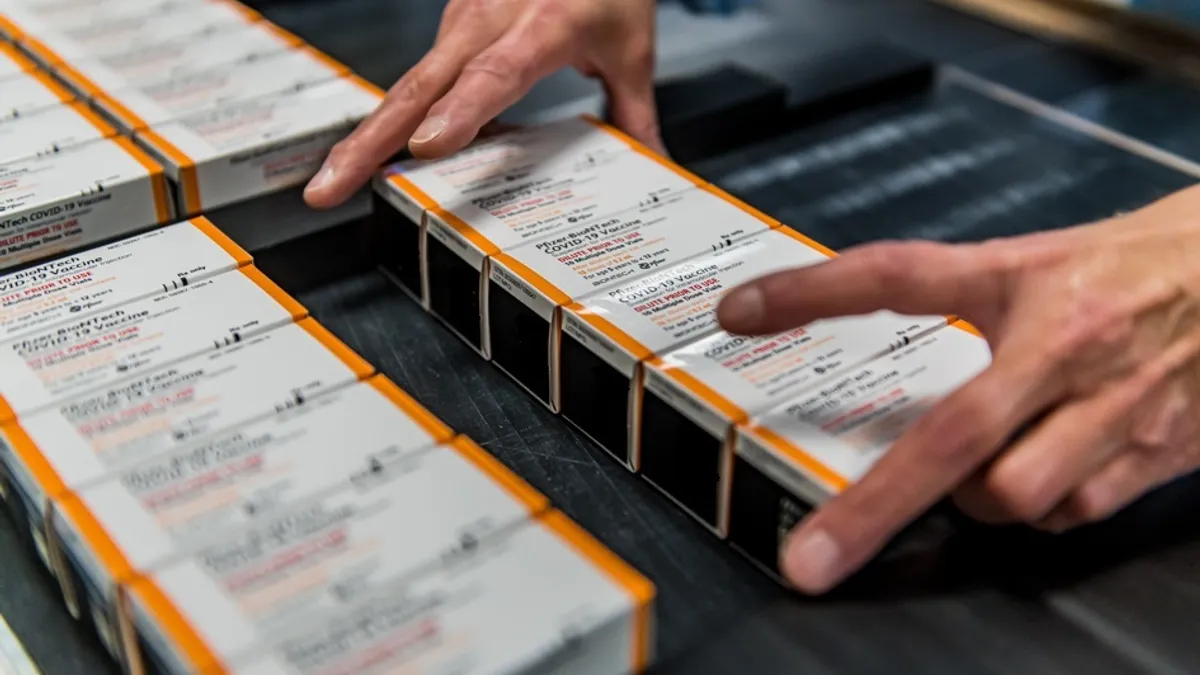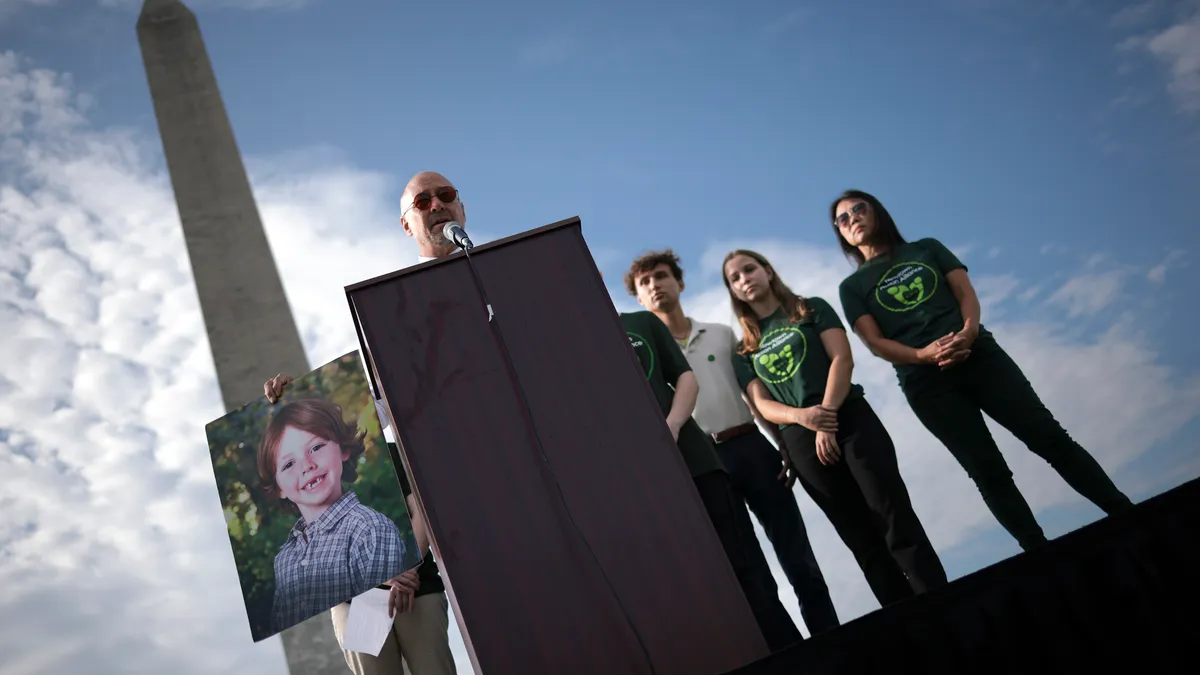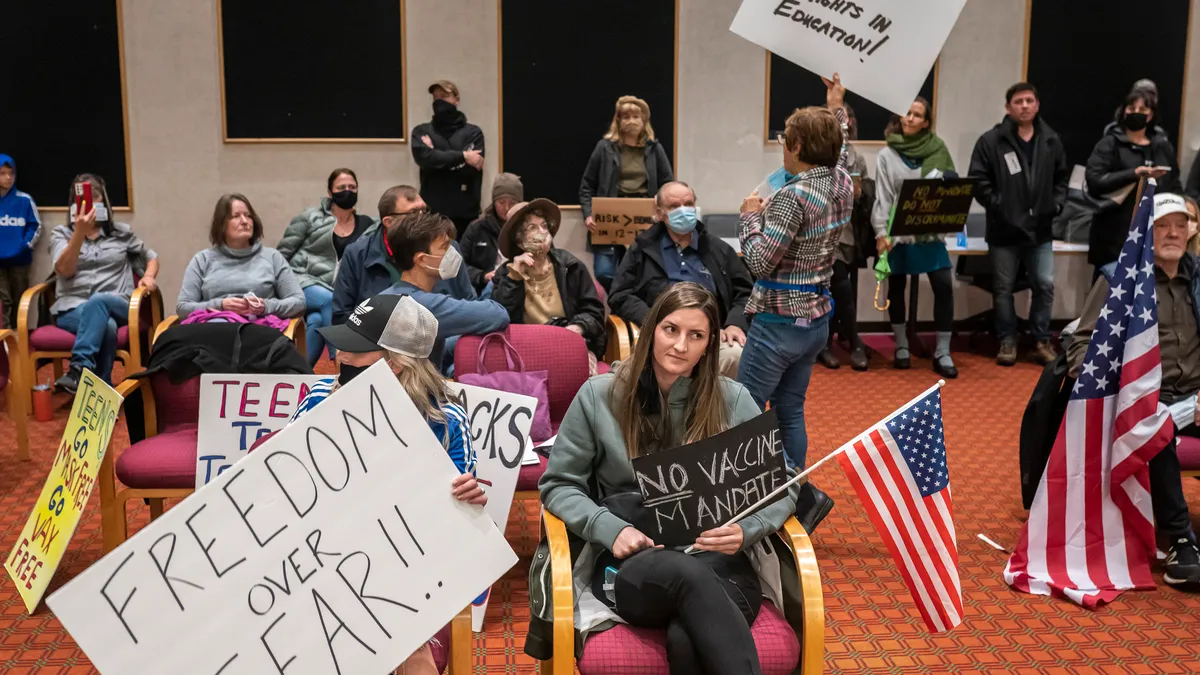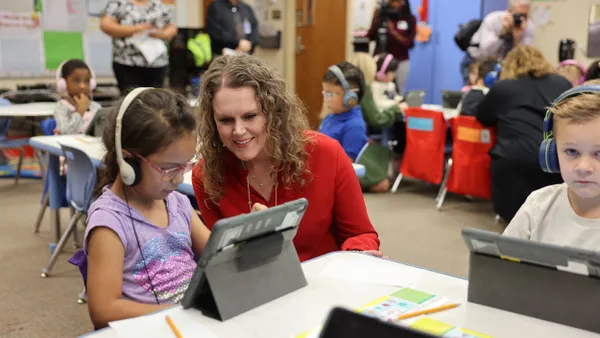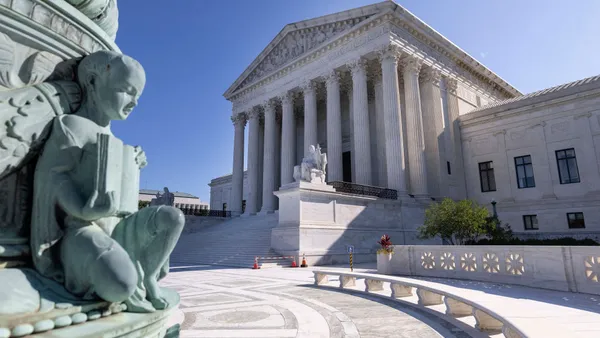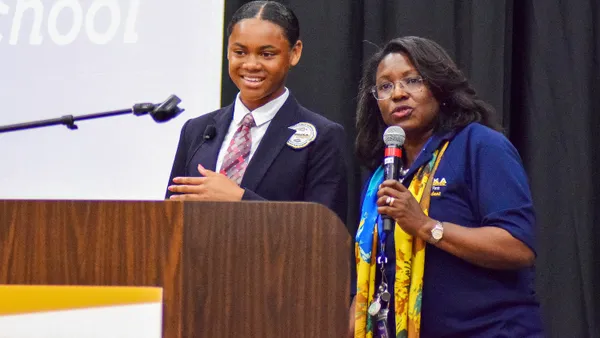Dive Brief:
- Food and Drug Administration scientists found the COVID-19 vaccines from Moderna and partners Pfizer and BioNTech to be comparably effective at boosting antibody levels in children as in teenagers and young adults, documents published Friday and over the weekend show.
- While vaccine efficacy in preventing disease was not formally tested in the companies’ trials, both shots also appeared to prevent disease, according to the FDA’s review of study data. There were no cases of heart inflammation in children who participated in testing, although the side effect has been linked in very rare cases to both vaccines among older adolescents and young adults.
- The documents were published ahead of a two-day meeting of FDA advisers on Tuesday and Wednesday to discuss use of the vaccines in young children. Moderna is seeking emergency authorization in infants 6 months of age through adolescents up to 17 years old. Pfizer, who already obtained FDA clearance for its vaccine in teenagers and children older than 5, is seeking an expanded authorization to include children aged 6 months to four years.
Dive Insight:
COVID-19 vaccines have been authorized in the U.S. for a year and a half, with the FDA progressively expanding their clearances to cover broader and broader swathes of the population. Yet they are still unavailable to the youngest children, who remain unprotected from waves of infection generated by the emergence of new variants.
The challenge for drugmakers has been to develop and test smaller doses that would be as safe and effective in younger children as they’ve been proven to be in older teens and adults.
Pfizer and BioNTech first attempted to do so with a two-shot regimen, which produced disappointing results and led to a monthslong delay in the FDA’s review. The partners reported better immune response results from a three-dose schedule. When compared to a placebo, three doses proved to be about 80% effective in preventing COVID-19 in children aged 6 months to 4 years old, although that estimate is based on a very small number of cases, limiting its interpretability.
Importantly, however, that effectiveness was measured at a time when the more infectious omicron strain was circulating. Other studies have shown omicron is better able to evade vaccines, including Pfizer’s, and reduces their protectiveness against infection.
Pfizer and BioNTech previously won authorization of their vaccine in children aged 5 years to 12 years old in October 2021, and in older teens in May 2021. Moderna, by comparison, has only received authorization of its shot in adults over 18 years old, so the FDA is also reviewing use of its vaccine in three separate age groups: 12- to 17-year-olds, 6- to 11-year-olds and children aged 6 months through 5 years. The latter two groups will receive smaller doses than what’s given to adults.
Moderna, which uses a higher dose level than Pfizer and BioNTech, tested its vaccine as a two-shot regimen, so it might have an edge if FDA grants authorization. Trial results showed varying efficacy by age group, from 93% in the 12- to 17-year-olds, to about 50% in the youngest children.
No cases of severe COVID-19 were reported by Moderna, while Pfizer reported six severe cases among vaccinated children 2 to 4 years old who were between their second and third doses. In five of those six cases, the classification as severe was based on a single criterion that the FDA did not judge to be clinically significant.
As important as the shot’s efficacy is its safety, and on that score, FDA staff noted side effects that were generally consistent, but at lower rates than what’s previously been observed in older teenagers. Neither Moderna nor Pfizer and BioNTech reported any cases of heart inflammation, or myocarditis, in trial participants.
The data submitted to the FDA so far are limited in follow-up, so it’s not clear how long protection might last or whether additional booster shots might be needed. In adults, the Centers for Disease Control and Prevention recommends a first booster shot at least five months after completing the primary vaccine series.
Authorization of either, or both, vaccines could spur an increase in vaccinations in the U.S., as children previously ineligible get their first shots. According to the CDC, 66% of the overall U.S. population are vaccinated with two doses, slightly lower than the 71% share of children aged 5 years old and over.
Fewer people have received booster doses, which are cleared in children as young as 12.




